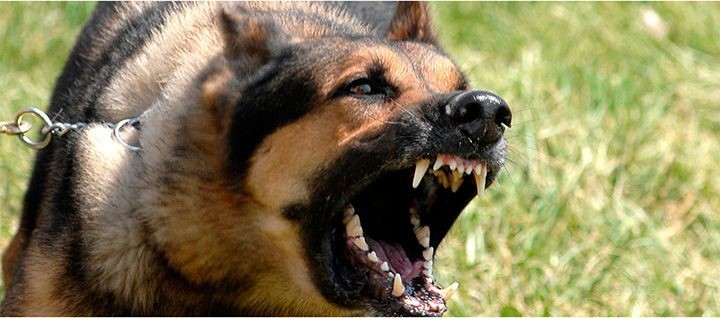
Aggressiveness is one of the most recurrent behavioral problems in dogs, as well as one of the main causes of abandonment and subsequent culling of these animals. And although there are several studies on this subject, the general lack of knowledge is still great.
Indice
One of the most common inconveniences that occur as a result of this lack of knowledge is the failure to seek professional help to identify and treat what has developed aggression in the dog, causing a worsening of the problem or even reaching a point of no return.
This is something that is very often seen with one of the least often taken into consideration triggers of aggression, pain, a common and unknown cause of aggression in dogs on a day-to-day basis.
Types of aggression in dogs and pain-induced aggression
Aggressiveness has behind it different motives that cause its appearance, and each of these motives is divided into a type of aggressiveness. Some of the best known examples are territorial, maternal, fear and redirected aggression, although there are many other types.
Pain aggression, as its name suggests, is that which occurs when the dog suffers from some ailment that can be caused by either an illness or an external injury. Pain makes the animal irritable and gives it a sense of vulnerability, which leads to aggressive behavior and even attacks if the dog is handled.
Pain aggression in dogs is the most common cause of attacks by dogs that had no history of aggression, and also a recognized cause of aggravation of aggressive behaviors in previously aggressive dogs.
The ailments and diseases that can lead to an aggressive reaction are varied, and virtually anything that causes the dog severe and constant pain can trigger it. In large large dogs for example, hip dysplasia is one of the most frequent reasons; on the other hand, cavities are another source of pain and worrying aggressiveness, shared by all dogs equally regardless of their size or breed.
An important point to note is that there are diseases that although they do not directly produce pain on the animal, they do cause the appearance of aggressiveness in the dog, such as developmental diseases, dementia, cognitive dysfunction syndrome, sensory deficiencies, hypothyroidism, among others.
Signs of pain aggression in dogs
One of the characteristics of pain aggression is that the attack or aggressive reaction is usually simultaneous, with no prior indication that it was going to occur. This is especially noticeable in dogs that were not dogs that were not aggressive previously, the pain makes them impulsive and they react to that which has increased their discomfort.
In the case of dogs that do have a previous history of aggression, the same thing may happen, although it may also happen that they show some previous warning. In these cases, the dog’s aggressiveness is increased and attacks can be much more violent than in previous situations.
However, it is important to be attentive to the usual warning signs given by dogs: stiff body, ears back and showing teeth, growling, barking and snapping teeth, staring, and nose flicking.







